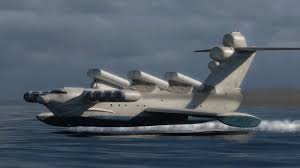
Breaking News
 Palantir's "Gotham" A.I. SURVEILLANCE SYSTEM And Peter Thiel's 4-Part Series ON TH
Palantir's "Gotham" A.I. SURVEILLANCE SYSTEM And Peter Thiel's 4-Part Series ON TH
 The Big List Of 18 Things That Are Going To Happen Within The Next 40 Days
The Big List Of 18 Things That Are Going To Happen Within The Next 40 Days
 'House of Cards' Star Robin Wright is Latest Celeb Fleeing to Europe
'House of Cards' Star Robin Wright is Latest Celeb Fleeing to Europe
 Your clothes hold a frequency.
Your clothes hold a frequency.
Top Tech News
 Neuroscientists just found a hidden protein switch in your brain that reverses aging and memory loss
Neuroscientists just found a hidden protein switch in your brain that reverses aging and memory loss
 NVIDIA just announced the T5000 robot brain microprocessor that can power TERMINATORS
NVIDIA just announced the T5000 robot brain microprocessor that can power TERMINATORS
 Two-story family home was 3D-printed in just 18 hours
Two-story family home was 3D-printed in just 18 hours
 This Hypersonic Space Plane Will Fly From London to N.Y.C. in an Hour
This Hypersonic Space Plane Will Fly From London to N.Y.C. in an Hour
 Magnetic Fields Reshape the Movement of Sound Waves in a Stunning Discovery
Magnetic Fields Reshape the Movement of Sound Waves in a Stunning Discovery
 There are studies that have shown that there is a peptide that can completely regenerate nerves
There are studies that have shown that there is a peptide that can completely regenerate nerves
 Swedish startup unveils Starlink alternative - that Musk can't switch off
Swedish startup unveils Starlink alternative - that Musk can't switch off
 Video Games At 30,000 Feet? Starlink's Airline Rollout Is Making It Reality
Video Games At 30,000 Feet? Starlink's Airline Rollout Is Making It Reality
 Grok 4 Vending Machine Win, Stealth Grok 4 coding Leading to Possible AGI with Grok 5
Grok 4 Vending Machine Win, Stealth Grok 4 coding Leading to Possible AGI with Grok 5
What Happened To Giant Ekranoplans?

The Soviets were developing a new class of vehicle that could move as fast as an aircraft, but lift far more payload than a conventional airplane. These machines would fly metres from the surface using an aerodynamic principle called the ground effect. They were called Ekranoplan (roughly translating to mean for "screen plane" or "low flying plane"). Beginning with experiments in the early 1960s, and headed by a pioneering hydrofoil engineer Rostislav Alexeyev, the Soviets quickly developed a series of small-scale prototypes to refine the concept. In 1966 they completed the KM (Korabl Maket) Russian for "ship-prototype". An enormous machine, larger and heavier than any aircraft in the world. The first large scale Ekranoplan could lift an astonishing 544,000 kg (1,199,315 lb) and reach speeds of over 600 km/h (373 mph).

 HERE COMES THE MOTHERSHIP
HERE COMES THE MOTHERSHIP

